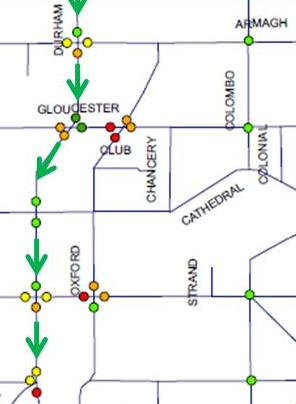Christchurch City Council commissioned an investigation into ways of improving pedestrian level of service (LOS) at traffic signals in the central city. In 2009, Gehl Architects prepared a study entitled Public Space Public Life (2010) that considered how people use public spaces and streets in central Christchurch. This precedent study resulted in Christchurch City Council's adoption of A City for People Action Plan (2010), which includes 66 related actions based on the recommendations in the study.

The paper covers Stage 1 of the investigation that addresses some of those actions, which involved developing a methodology to measure existing LOS for each signalised pedestrian crossing in the study area, allocating a LOS score to each signalised pedestrian crossing, and identifying tools for improving pedestrian LOS. There were 32 signalised intersections within the study area, equating to 110 signalised pedestrian crossings under consideration. The improvements considered for the project were restricted to changing traffic signal operations and adjusting signal hardware.
We are not aware of a methodology measuring LOS for pedestrians at traffic signals that goes beyond delay. This is the new aspect stemming from our work.
Several methods were investigated to improve the existing pedestrian LOS. Testing of these methods indicated that the largest improvement to LOS would be gained through the reduction of the cycle time.
Since the paper was submitted, Stage 2 of the project has been undertaken. This included a detailed proposal for each signalised crossing and modelling of the effects in Paramics. The presentation reports the predicted results; whilst the average LOS for pedestrian increases from LOS D to LOS C, the overall network performance for motorists remains fairly unchanged. A fantastic result!
The methodology is easily transferable to areas outside of the central city, and is applicable to other cities. Another major city has already expressed an interest in applying the methodology. The underlying hypothesis of this project is that improving the pedestrian level of service of the central city will increase prosperity.
2011 IPENZ Transportation Conference, Auckland
